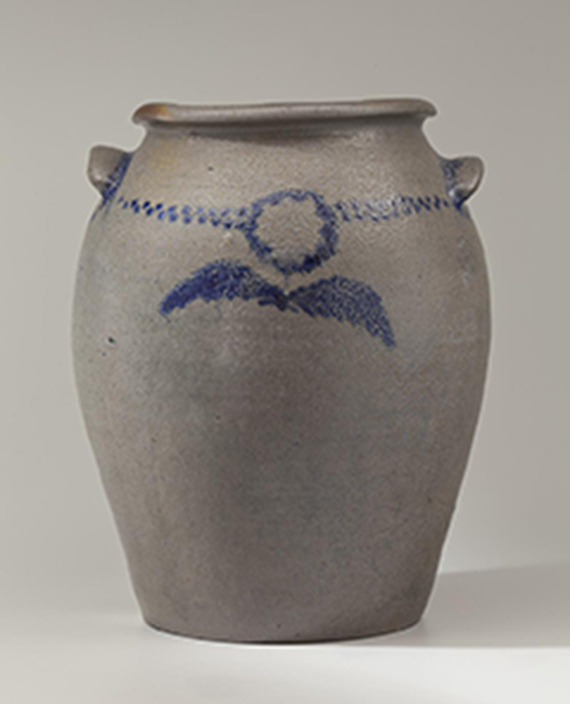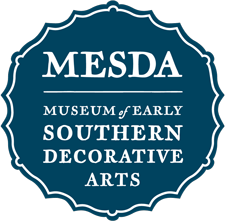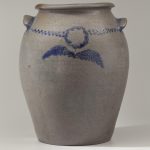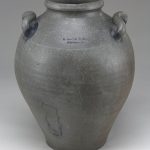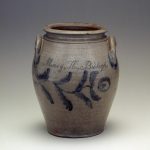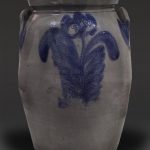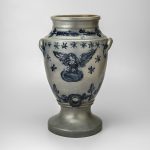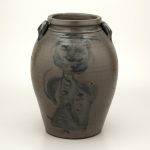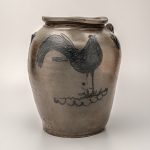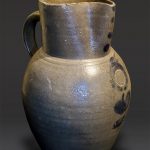From Kaolin to Claymount: Demystifying James River Valley Stoneware
James River Valley pottery has been the subject of archaeological and collector interest for over half a century. The James River and its tributaries were home to more than a dozen potteries before the Civil War. Potters hailing from New York, New Jersey, Pennsylvania, Maryland, Ireland and England, created a rich hybrid tradition with forms and decorations adapted from their regional styles and wrought in local clays dug from Kaolin to Claymount.
Transcending their status as utilitarian objects, these pots, many exhibited here for the first time, provide a remarkable record and a unique glimpse into a significant and long-lived concentration of pottery manufacturing in eastern Virginia. Viewed collectively, they present a bold decorative aesthetic rivaling long-recognized and celebrated schools of production seen elsewhere in the commonwealth and the Nation.
Today, many of these important historic sites are threatened by development. Fortunately, archaeologists and decorative arts scholars are working ahead of the bulldozers to document and understand the important legacy of the James River Potteries before they are lost forever. At the end of 2013 the Chipstone Foundation journal Ceramics in America will publish an extensive article about the James River Valley stoneware potteries based on this ongoing research.
This exhibition was on view at MESDA from November 2012 through March 2012. It was co-curated by Kurt Russ, Oliver Mueller-Heubach, Marshall Goodman, and Robert Hunter and was the subject of a MESDA Saturday Seminar, No Stone(ware) Left Unturned, on January 19, 2013.
